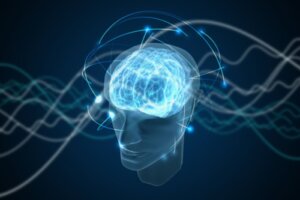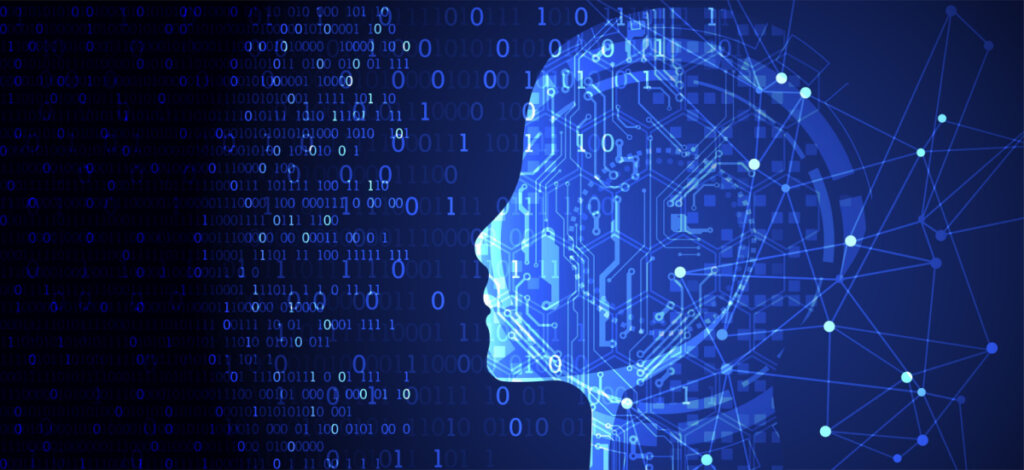The Global Consciousness Project and its Fascinating Findings


Reviewed and approved by the psychologist Sergio De Dios González
The Global Consciousness Project is an international initiative that originated at Princeton University (USA) in 1998. It aims to discover if an individual’s mind generates energy that extends beyond the skull. If so, it could be hypothesized that there’s a kind of ‘universal mind’ or ‘universal consciousness’ formed by the synergy of energies of each individual mind.
You might think that this particular issue is more suited to the field of supernatural study. However, in reality, it was physicists and engineers who created the Global Consciousness Project (GCP). Moreover, it uses scientific tools.
Exotic and controversial as the subject is, the Global Consciousness Project has already yielded some significant results. In fact, although the validity of its premises hasn’t yet been proven, and the investigation is still in its early stages, it’s generated some really striking evidence. We’re going to talk about this below.
“Consciousness can only exist in one way, and that is by being aware that it exists.”
-Jean-Paul Sartre-

The Global Consciousness Project
In 1979, the Dean of the School of Engineering and Applied Science at Princeton University, Robert G. Jahn, created a dependent institution. It was called the Princeton Engineering Anomalies Research (PEAR) lab. Its purpose was to study the interaction between the human mind and the phenomena of the physical world. The premises of this experience have been included in an article written by Nelson et al.
Nearly 20 years later, researcher Roger Nelson started the Global Consciousness Project. This scientist was focused on the study of the role that consciousness and intention play in the physical world. As a matter of fact, sensitive engineering equipment had already perceived this effect. However, Nelson wanted to explore how it affected the ordinary world and to what extent it happened.
The Global Consciousness Project is classified as an experiment. Nelson used a technology known as a random event generator to capture and study ‘group consciousness’ states and their variations. First, he focused on the local level and then he moved to the international field. Currently, the project is operating in 70 countries.
The experiment
The Global Consciousness Project has software installed on computers in 70 countries. These continuously generate two numbers: one and zero, randomly. There’s no pre-established order, the figures appear randomly. For instance, 0001001110010111111001. This happens every second, in the different ‘reception centers’.
All data is transferred to a central archive located in Princeton at a rate of 200 bits per second. Over the years, random sets of figures have been compiled. The purpose has always been to establish if there are correlations between the data issued from different places around the world.
All went to plan, until September 6, 1997, when an unexpected event occurred. Suddenly, all the generators seemed to be in sync and started sending out patterns that no longer seemed random. It was something like 0001110011000111. The most significant event of that day was the funeral of Diana of Wales along with the associated collective grief.

Coincidence or evidence?
Later, researchers from the Global Consciousness Project found that symmetries formed in numbers around other relevant events. For example, New Year’s Eve. The project also captured the same synchrony before events such as the bombing of the former Yugoslavia and the Kursk tragedy.
This was fascinating but the most amazing thing hadn’t yet happened. It occurred on September 11, 2001, four hours BEFORE the attack on the Twin Towers in New York took place. Nelson reported the findings in a now-famous article.
The scientists were extremely surprised. They certainly hadn’t expected such a result. However, in December 2004, the strange number sequencing occurred again, but there was no special event. But, 24 hours later, the famous Indian Ocean tsunami struck. This poses the question: is global consciousness capable of predicting events?
Despite the evidence, the scientists of the Global Consciousness Project prefer to be cautious. Indeed, they suggest that it’s not yet possible to draw conclusions about what happened. After all, the experiment is still in its infancy. However, they’re confident that it’ll continue to provide fascinating results.
The Global Consciousness Project is an international initiative that originated at Princeton University (USA) in 1998. It aims to discover if an individual’s mind generates energy that extends beyond the skull. If so, it could be hypothesized that there’s a kind of ‘universal mind’ or ‘universal consciousness’ formed by the synergy of energies of each individual mind.
You might think that this particular issue is more suited to the field of supernatural study. However, in reality, it was physicists and engineers who created the Global Consciousness Project (GCP). Moreover, it uses scientific tools.
Exotic and controversial as the subject is, the Global Consciousness Project has already yielded some significant results. In fact, although the validity of its premises hasn’t yet been proven, and the investigation is still in its early stages, it’s generated some really striking evidence. We’re going to talk about this below.
“Consciousness can only exist in one way, and that is by being aware that it exists.”
-Jean-Paul Sartre-

The Global Consciousness Project
In 1979, the Dean of the School of Engineering and Applied Science at Princeton University, Robert G. Jahn, created a dependent institution. It was called the Princeton Engineering Anomalies Research (PEAR) lab. Its purpose was to study the interaction between the human mind and the phenomena of the physical world. The premises of this experience have been included in an article written by Nelson et al.
Nearly 20 years later, researcher Roger Nelson started the Global Consciousness Project. This scientist was focused on the study of the role that consciousness and intention play in the physical world. As a matter of fact, sensitive engineering equipment had already perceived this effect. However, Nelson wanted to explore how it affected the ordinary world and to what extent it happened.
The Global Consciousness Project is classified as an experiment. Nelson used a technology known as a random event generator to capture and study ‘group consciousness’ states and their variations. First, he focused on the local level and then he moved to the international field. Currently, the project is operating in 70 countries.
The experiment
The Global Consciousness Project has software installed on computers in 70 countries. These continuously generate two numbers: one and zero, randomly. There’s no pre-established order, the figures appear randomly. For instance, 0001001110010111111001. This happens every second, in the different ‘reception centers’.
All data is transferred to a central archive located in Princeton at a rate of 200 bits per second. Over the years, random sets of figures have been compiled. The purpose has always been to establish if there are correlations between the data issued from different places around the world.
All went to plan, until September 6, 1997, when an unexpected event occurred. Suddenly, all the generators seemed to be in sync and started sending out patterns that no longer seemed random. It was something like 0001110011000111. The most significant event of that day was the funeral of Diana of Wales along with the associated collective grief.

Coincidence or evidence?
Later, researchers from the Global Consciousness Project found that symmetries formed in numbers around other relevant events. For example, New Year’s Eve. The project also captured the same synchrony before events such as the bombing of the former Yugoslavia and the Kursk tragedy.
This was fascinating but the most amazing thing hadn’t yet happened. It occurred on September 11, 2001, four hours BEFORE the attack on the Twin Towers in New York took place. Nelson reported the findings in a now-famous article.
The scientists were extremely surprised. They certainly hadn’t expected such a result. However, in December 2004, the strange number sequencing occurred again, but there was no special event. But, 24 hours later, the famous Indian Ocean tsunami struck. This poses the question: is global consciousness capable of predicting events?
Despite the evidence, the scientists of the Global Consciousness Project prefer to be cautious. Indeed, they suggest that it’s not yet possible to draw conclusions about what happened. After all, the experiment is still in its infancy. However, they’re confident that it’ll continue to provide fascinating results.
All cited sources were thoroughly reviewed by our team to ensure their quality, reliability, currency, and validity. The bibliography of this article was considered reliable and of academic or scientific accuracy.
- Nelson, R. (s. f.). The Global Consciousness Project. https://noosphere.princeton.edu/.
- Nelson, R. D., Radin, D. I., Shoup, R., & Bancel, P. A. (2002). Correlations of continuous random data with major world events. Foundations of Physics Letters, 15(6), 537-550.
- Nelson, R. D. (2002). Coherent consciousness and reduced randomness: Correlations on September 11, 2001. Journal of Scientific Exploration, 16(4), 549-570.
- Cazana, S. (2010). La siguiente frontera de la mente: experimentos de la Universidad de Princeton hacen suponer la existencia de una conciencia colectiva a nivel mundial. Perú Económico, 33(7), 40-42.
This text is provided for informational purposes only and does not replace consultation with a professional. If in doubt, consult your specialist.







